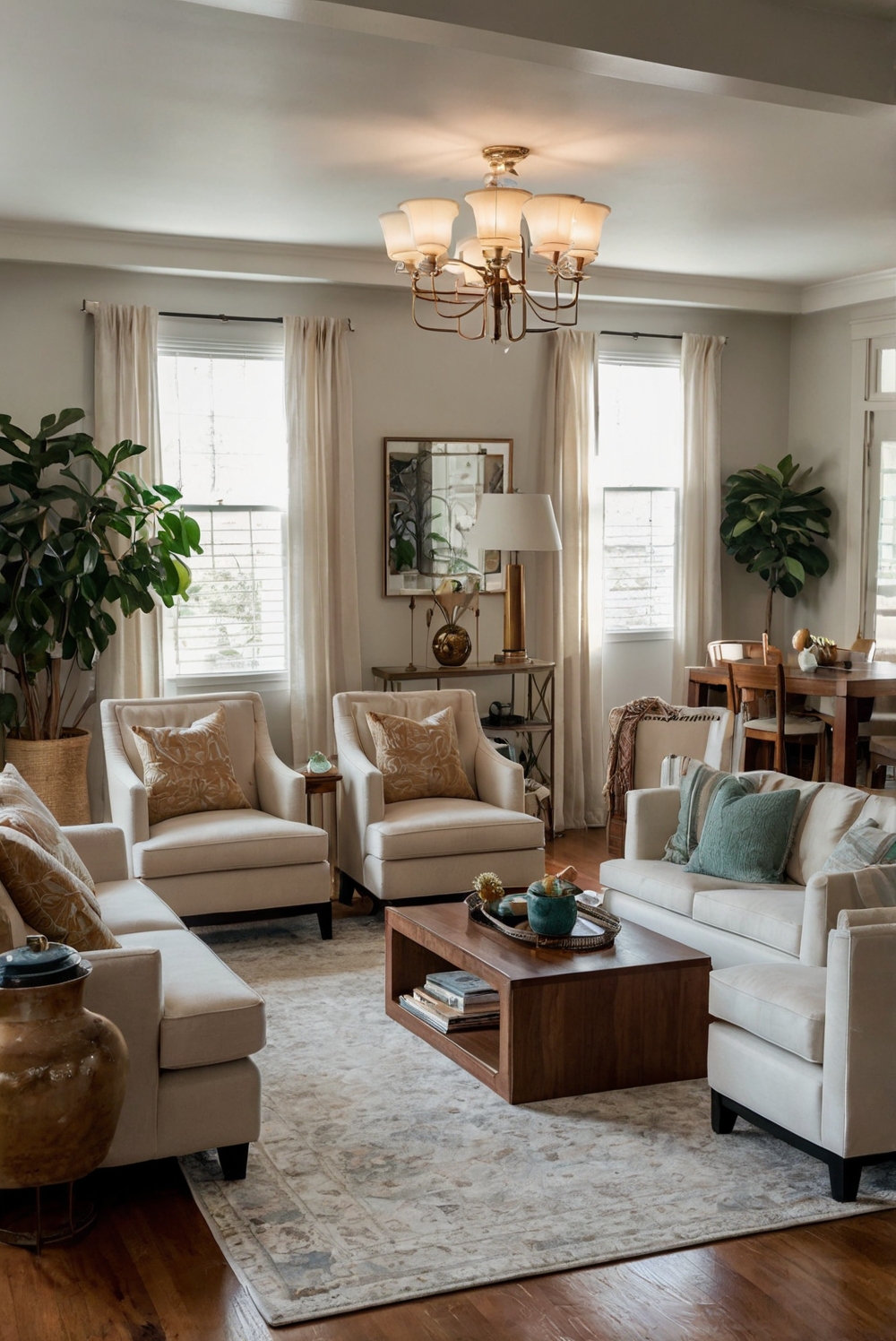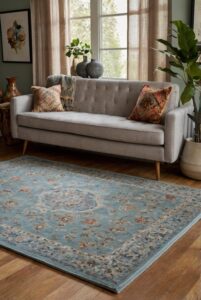Curious about furniture arranging in open-concept living and kitchen spaces? Discover expert tips and stylish decor ideas in this daily interior designer routine.
**How do you arrange furniture in an open-concept living and kitchen space?**
In an open-concept living and kitchen space, it’s important to create distinct zones for different functions while maintaining a cohesive look. Start by placing larger furniture pieces like sofas and dining tables strategically to delineate the living room and kitchen areas. Use area rugs to further define each space. Avoid blocking sight lines by opting for low-profile furniture or transparent furniture pieces like glass coffee tables. Consider using furniture with storage solutions to keep the space organized. You can also add room dividers or large plants to provide separation between the areas without completely closing them off. Ensure proper lighting for each zone to enhance the overall atmosphere of the space.
When arranging furniture in an open-concept living and kitchen space
Consider the overall layout of the room
It is essential to take into account the size and shape of the room when arranging furniture in an open-concept living and kitchen space. Start by identifying the focal points in the room, such as windows, doors, and architectural features. This will help you determine the best placement for key furniture pieces.
Define different zones within the space
To create a sense of cohesion and organization in an open-concept living and kitchen space, consider defining different zones for specific activities. For example, you can designate one area for lounging and watching TV, another for dining, and a third for cooking and food preparation. Use area rugs, lighting, and furniture placement to delineate these zones.
Use furniture to create flow and define spaces
When arranging furniture in an open-concept living and kitchen space, it is crucial to create a sense of flow between different areas while also defining individual spaces. Consider using furniture pieces like sofas, chairs, and bookcases to create natural pathways and boundaries within the room. This will help guide traffic flow and prevent the space from feeling cluttered or chaotic.
Consider the scale and proportion of furniture pieces
When arranging furniture in an open-concept living and kitchen space, it is important to consider the scale and proportion of each piece. Avoid overcrowding the room with oversized furniture, as this can make the space feel cramped and uncomfortable. Instead, opt for appropriately sized pieces that fit the scale of the room and leave enough space for traffic flow and movement.
Use versatile furniture pieces for flexibility
When arranging furniture in an open-concept living and kitchen space, consider using versatile furniture pieces that can serve multiple purposes. For example, choose a dining table that can double as a workspace or a coffee table with storage for added functionality. This will help maximize the use of the space and make it more adaptable to different activities and needs.
1. What are some tips for arranging furniture in an open-concept living and kitchen space?
To create a cohesive look in an open-concept space, consider using area rugs to define different zones. Use larger furniture pieces to anchor each area and create a sense of separation. Ensure there is enough space between furniture pieces for easy movement. Arrange seating areas to encourage conversation and social interaction. Incorporate multifunctional furniture pieces to maximize space efficiency. Utilize lighting to create ambiance and highlight different areas within the space.
2. How can you create a visually appealing layout in an open-concept living and kitchen space?
To create a visually appealing layout, consider using a color scheme that flows seamlessly between the living and kitchen areas. Use furniture pieces with similar styles and finishes to create a cohesive look. Incorporate a variety of textures and materials to add visual interest. Balance the layout by placing larger furniture pieces against walls and using smaller pieces to fill in the space. Add decorative elements such as artwork, plants, and accessories to personalize the space and make it feel inviting.
3. What are some common mistakes to avoid when arranging furniture in an open-concept living and kitchen space?
Some common mistakes to avoid include overcrowding the space with too much furniture, blocking natural light sources with large pieces, and neglecting the flow of traffic within the space. Avoid placing furniture directly against walls, as this can make the space feel closed off. Be mindful of scale and proportion when selecting furniture pieces to ensure they complement the size of the space. Consider the function of each area and arrange furniture accordingly to maximize usability and comfort.
4. How can you make the most of a small open-concept living and kitchen space?
In a small open-concept space, maximize functionality by using multifunctional furniture pieces such as a dining table that can also serve as a workspace. Opt for furniture with built-in storage to minimize clutter and keep the space organized. Use light colors and strategic lighting to make the space feel larger and brighter. Consider using furniture with legs to create a sense of openness and visual space. Utilize mirrors to reflect light and create the illusion of a larger space.
5. What are some creative ways to define separate areas in an open-concept living and kitchen space?
Creative ways to define separate areas include using different flooring materials or area rugs to visually delineate each zone. Consider using furniture arrangements to create natural divisions between the living and kitchen areas. Use decorative screens or curtains to add privacy and separation when desired. Incorporate architectural elements such as half-walls or columns to define each space while maintaining an open feel. Consider adding a statement light fixture or artwork to anchor each area and create a focal point.




